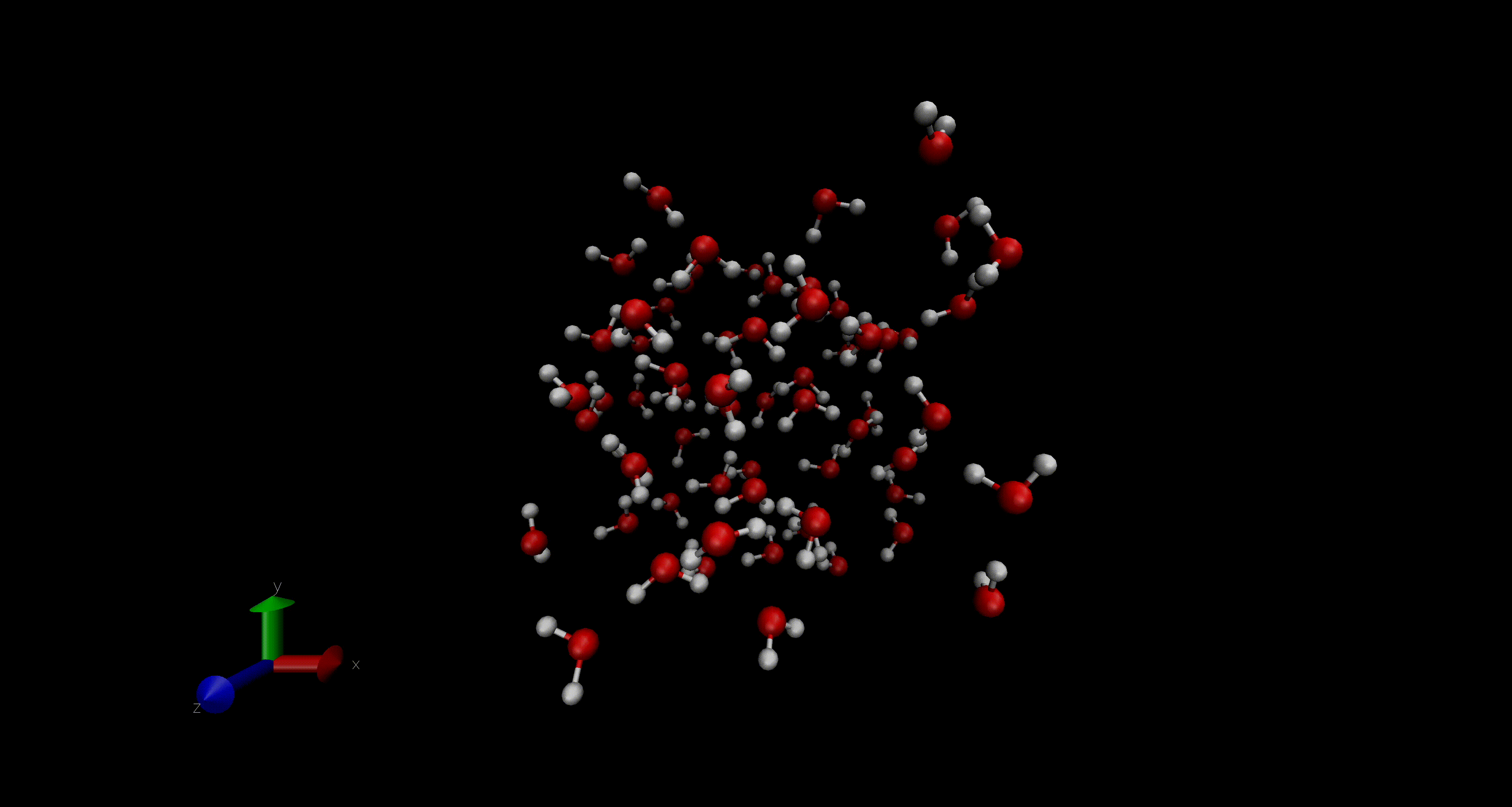Run massive simulations when your client needs it. Pay nothing when they don’t.
Run Your First Simulation
This tutorial will show you how to run CP2K simulations using the Inductiva API.
This tutorial will cover the H20-64 benchmark, available in the official CP2K website, to help you get started with simulations.
The use case simulates a system containing 64 water molecules (192 atoms, 512 electrons) in a 12.4 ų cell, with MD running for 10 steps.
We will also demonstrate Inductiva’s ability to efficiently scale this use case on a more powerful machine.

Prerequisites
Download the required files here and place them in a folder called H2O-64. Then, you’ll be ready to send your simulation to the Cloud.
Running an CP2K Simulation
Here is the code required to run OpenSees simulation using the Inductiva API:
"""CP2K Simulation."""
import inductiva
# Allocate a machine on Google Cloud Platform
cloud_machine = inductiva.resources.MachineGroup(
provider="GCP",
machine_type="c2d-highcpu-16",
spot=True)
# Initialize the Simulator
cp2k = inductiva.simulators.CP2K(
version="2025.1")
# Run simulation
task = cp2k.run(
input_dir="/Path/to/H2O-64",
sim_config_filename="H2O-64.inp",
on=cloud_machine)
# Wait for the simulation to finish and download the results
task.wait()
cloud_machine.terminate()
task.download_outputs()
task.print_summary()
In this basic example, we're using a cloud machine (c2d-highcpu-16) equipped with 16 virtual CPUs.
For larger or more compute-intensive simulations, consider adjusting the machine_type parameter to select
a machine with more virtual CPUs or one equipped with GPUs. You can explore the full range of available
machines here.
Note: Setting
spot=Trueenables the use of spot machines, which are available at substantial discounts. However, your simulation may be interrupted if the cloud provider reclaims the machine.
To adapt this script for other CP2K simulations, replace input_dir with the
path to your CP2K input files and set the sim_config_filename accordingly.
When the simulation is complete, we terminate the machine, download the results and print a summary of the simulation as shown below.
Task status: Success
Timeline:
Waiting for Input at 17/04, 15:02:28 0.883 s
In Queue at 17/04, 15:02:29 37.933 s
Preparing to Compute at 17/04, 15:03:07 11.183 s
In Progress at 17/04, 15:03:18 84.261 s
└> 84.152 s /opt/openmpi/5.0.6/bin/mpirun --use-hwthread-cpus cp2k.psmp H2O-64.inp
Finalizing at 17/04, 15:04:43 0.428 s
Success at 17/04, 15:04:43
Data:
Size of zipped output: 86.81 KB
Size of unzipped output: 290.38 KB
Number of output files: 5
Total estimated cost (US$): 0.0131 US$
Estimated computation cost (US$): 0.0031 US$
Task orchestration fee (US$): 0.010 US$
Note: A per-run orchestration fee (0.010 US$) applies to tasks run from 01 Dec 2025, in addition to the computation costs.
Learn more about costs at: https://inductiva.ai/guides/how-it-works/basics/how-much-does-it-cost
As you can see in the "In Progress" line, the part of the timeline that represents the actual execution of the simulation, the core computation time of this simulation was approximately 84 seconds (around 1 min and 24 seconds).
For comparison, the same simulation takes 1 minute and 15 seconds on a similar local machine with 16 virtual CPUs (Ryzen 7 7700X). This performance difference is expected as cloud CPUs typically have lower clock speeds compared to regular desktop processors, prioritizing energy efficiency and density over raw speed.
However, increasing the number of vCPUs on the cloud machine could improve performance.
Scaling Up Your Simulation
Scaling up your simulation is as simple as updating the machine_type parameter to a 56 vCPU machine (c2d-highcpu-56).
As mentioned above, running this simulation on a 16 vCPU cloud machine was slower than on a similarly powered local computer. To improve performance, we upgraded to a c2d-highcpu-56 instance with 56 vCPUs, reducing the runtime to just 43 seconds — with a slight cost increase to $0.0058.
| Machine Type | vCPUs | Execution Time | Estimated Cost (USD) |
|---|---|---|---|
| Local Ryzen 7 7700X | 16 | 1 min, 15s | N/A |
| Cloud c2d-highcpu-16 | 16 | 1 min, 24s | 0.0031 |
| Cloud c2d-highcpu-56 | 56 | 43s | 0.0058 |
By leveraging the Inductiva API, you can efficiently scale your CP2K simulations to meet your computational needs. Try different machine configurations and optimize your workflow for faster, more cost-effective results!
Test Your Inductiva Setup
Test your Inductiva.AI setup by running a quick CP2K simulation in the cloud before scaling to larger quantum & molecular studies.
CP2K Benchmark - H2O-512 Scaling on the Cloud
This benchmark evaluates the performance of the CP2K simulator by running an ab-initio molecular dynamics (AIMD) simulation of liquid water. The test is based on the standard H2O-64 benchmark from CP2K but extended to H2O-512 (512 water molecules, 1536 atoms, 4096 electrons) to better leverage cloud scalability.